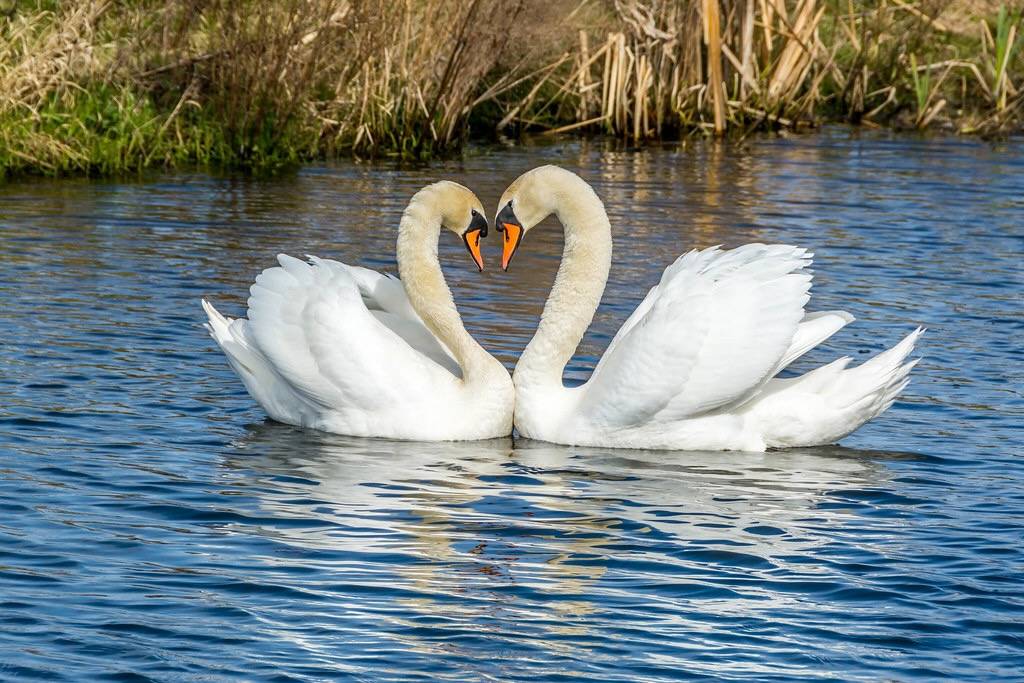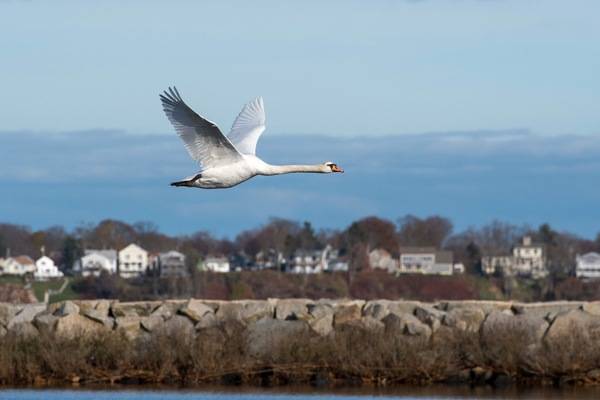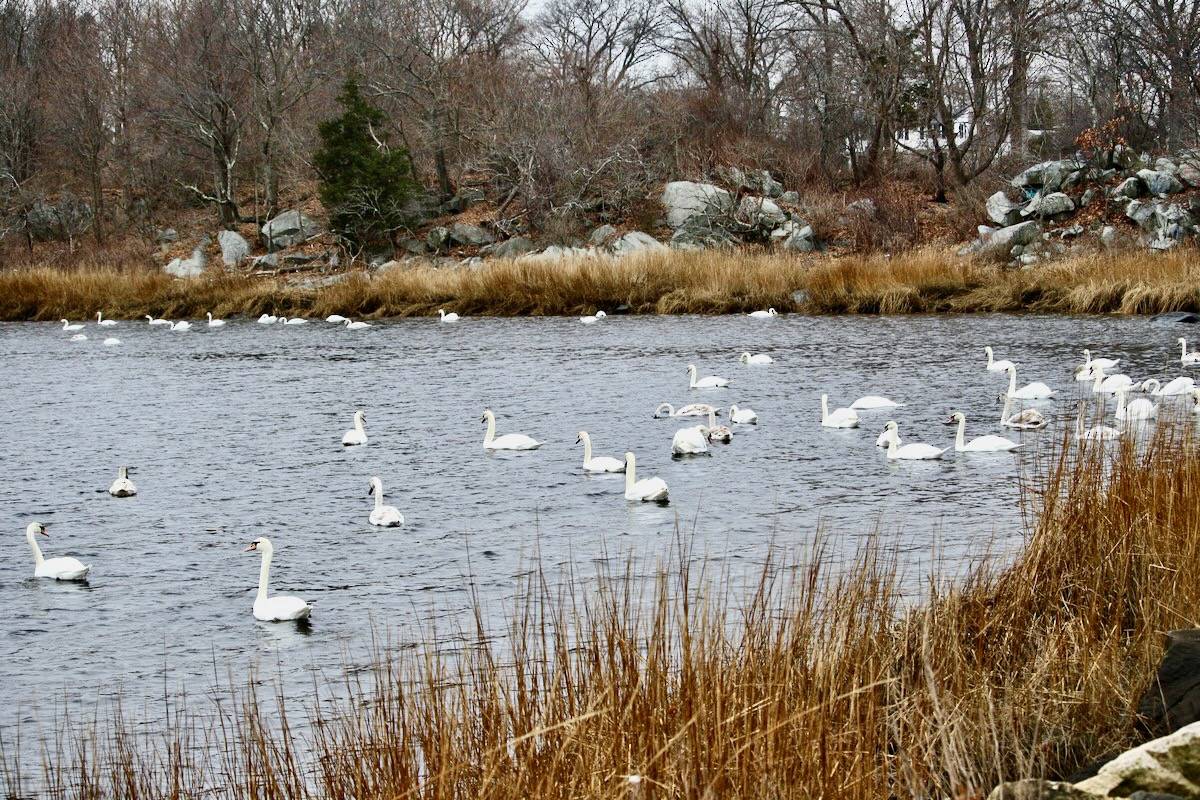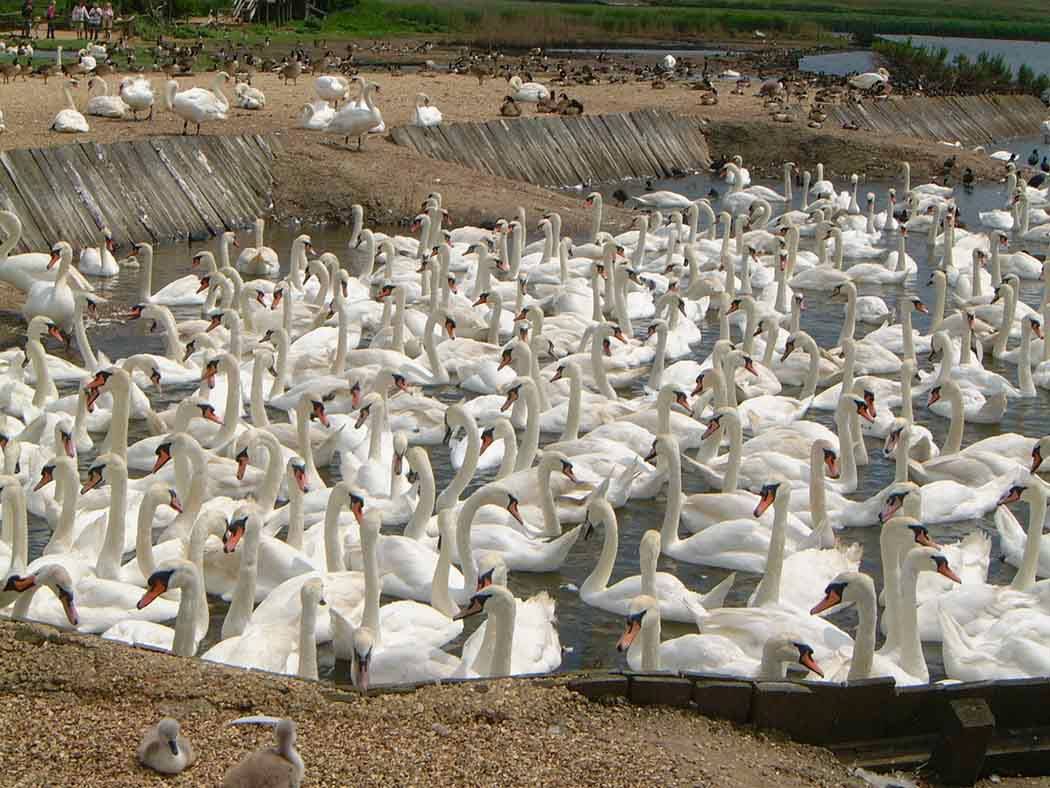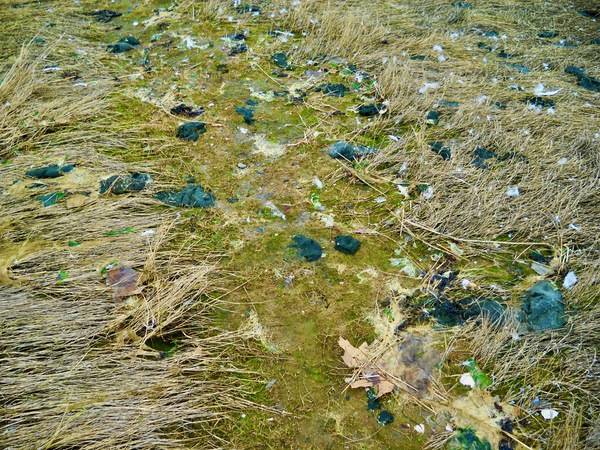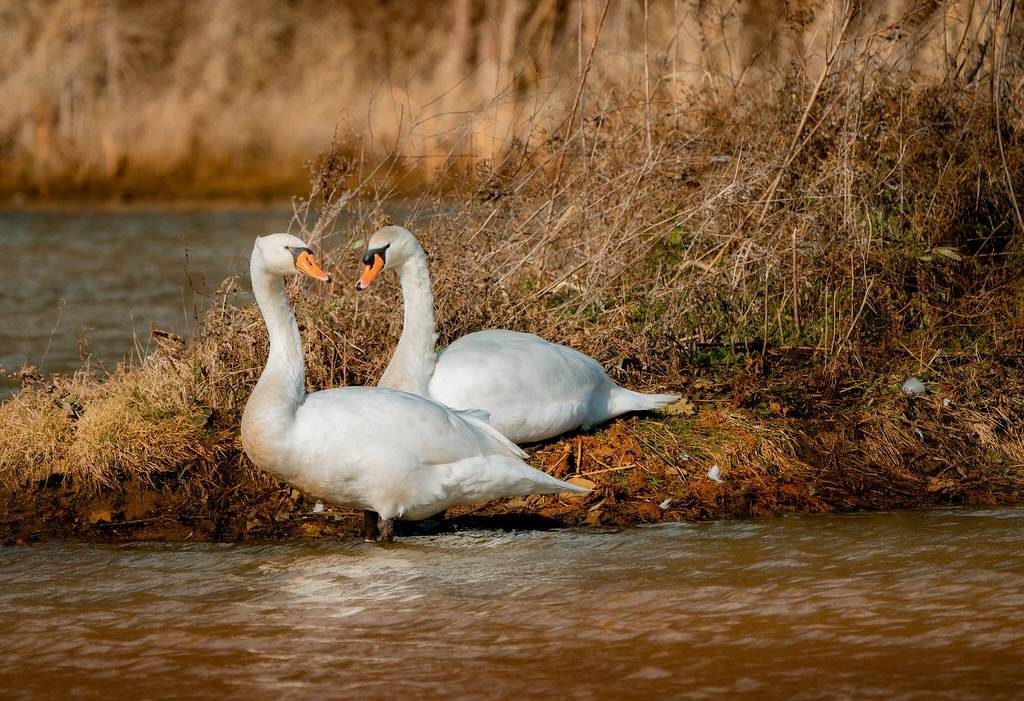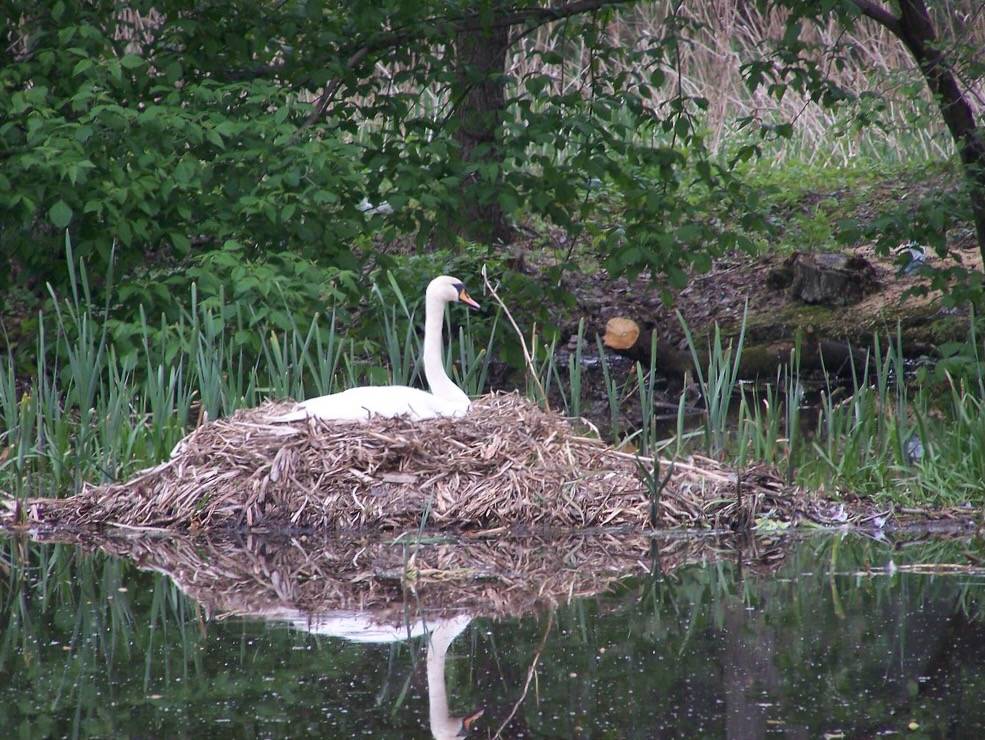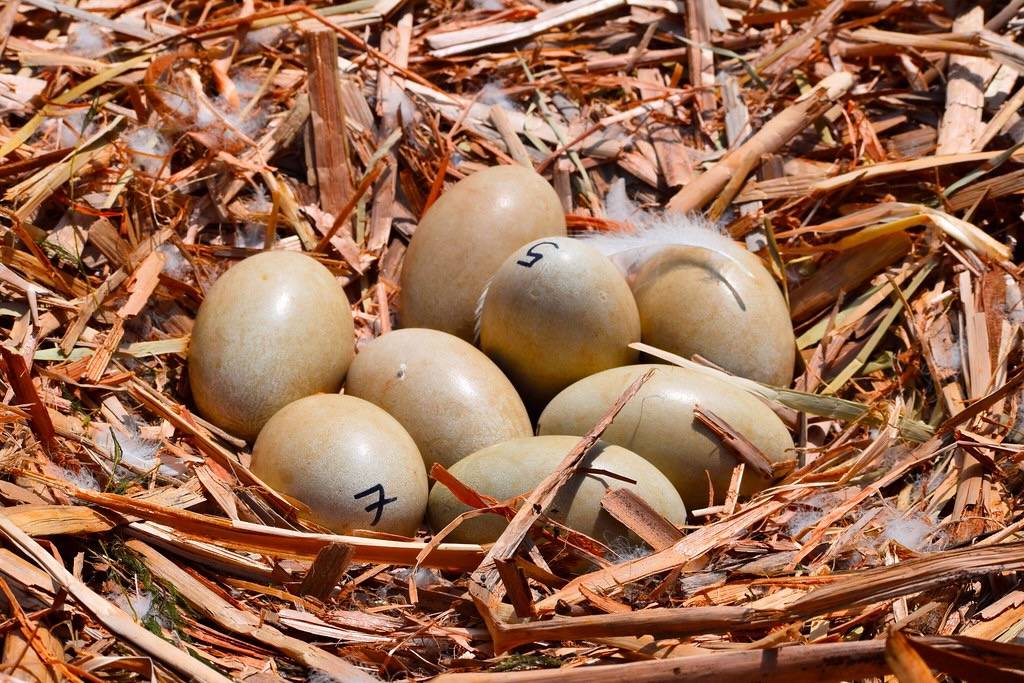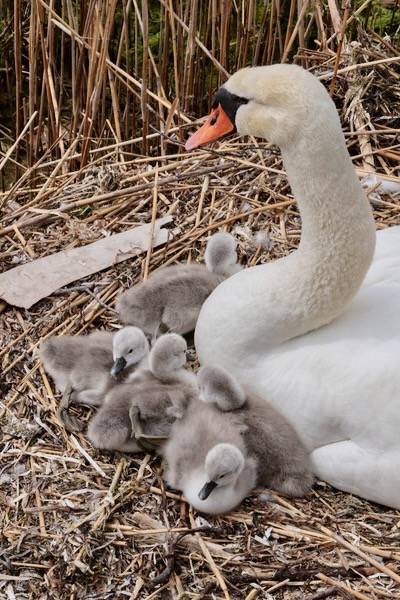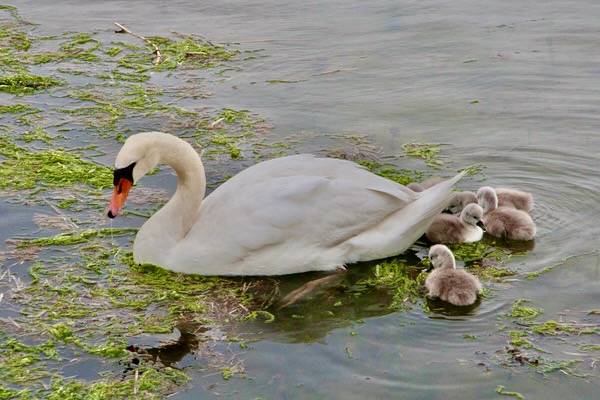Mute Swan
Mute Swans are present at Salter Grove throughout the year in the coves north and south of the causeway. These large and elegant birds are easily seen even without binoculars from either the causeway or along the Marsh Trail. Numbers within the park can vary from a few to over 150 through the year. No nests have been recorded in the park although adult-sized juveniles have been observed in 2022 and 2023.
Many visitors come to the park especially to see the Mute Swan. After all, it is a familiar cultural reference from the fairy tale, The Ugly Duckling, and the ballet, Swan Lake. It is moreover a symbol of romantic love because of the graceful and seemingly gentle displays between mated birds and their long-lasting pair bonds. However, visitors should be aware that breeding swans can be quite aggressive towards all intruders near the nest.
Most people are surprised to learn that it is a naturalized species native to temperate Europe. It was brought to the United States in the late 19th century to adorn grand estates and parks along the Hudson River and in Long Island because of its imposing presence. These swans had their flight feathers clipped regularly so they could not fly away.
In recent decades, however, the Mute Swan has become a concern to North American wildlife managers along the Atlantic seaboard. Domesticated birds that escaped have produced thriving feral populations that threaten the sustainability of both wetland vegetation and native waterfowl.
It has a large appetite and uproots as much as 20 pounds of submerged vegetation to harvest the eight pounds of plant matter required daily to support a body weight of 23 to 31 pounds--the recorded maximum being 51 pounds! Clearly, a large population of swans in an area would drastically reduce the productivity and availability of vegetation for native dabbler species.
Mute Swans were first observed on Block Island in 1923. A 2006 study by the Rhode Island Department of Environmental Management reported that they had expanded into coastal ponds and wetlands that empty into Narragansett Bay and nests were found as far north as Woonsocket.
Although a high of 1,500 swans were estimated to populated the state in 1999, conservation practices by the Fish and Wildlife Division of DEM have resulted in a more manageable population. The latest estimate in 2019 indicates a tolerable population of about 500 for Rhode Island.
Rhode Island must be particularly suitable for Mute Swans. The oldest known male in North America was banded here in 1962 and then encountered again in 1988. Its age of 26 years and 9 months far exceeds the 9-12 years lifespan of this species.
For more information:
https://www.allaboutbirds.org/guide/Mute_Swan
https://www.audubon.org/field-guide/bird/mute-swan
https://en.wikipedia.org/wiki/Mute_swan
http://www.biokids.umich.edu/critters/Cygnus_olor/
https://dem.ri.gov/sites/g/files/xkgbur861/files/programs/bnatres/fishwild/pdf/muteplan.pdf
https://nsgl.gso.uri.edu/riu/riug88005.pdf

